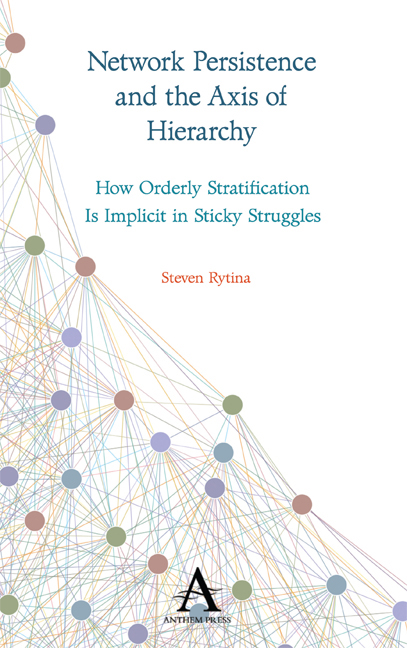 Network Persistence and the Axis of Hierarchy
Network Persistence and the Axis of Hierarchy Book contents
- Frontmatter
- Contents
- List of Illustrations
- Preface
- Chapter One Sticky Struggles: The Unified Pattern of Social Ranks Inherent in Networks
- Chapter Two Foundations of Cacophony
- Chapter Three Knots of Regularity
- Chapter Four Hierarchy: Inevitable but Inevitably Messy
- Chapter Five The Inevitable Emergence of Stratification
- Chapter Six Scaling Intergenerational Continuity: Is Occupational Inheritance Ascriptive After All?
- Chapter Seven Taming the Mobility Table
- Chapter Eight Is Occupational Mobility Declining in the United States?
- Chapter Nine The Continuum of Class over Time: Deconstructing Imposed Class to Uncover Empirical Classes
- Chapter Ten Concluding Reflections
- Appendix Why Robust Attraction Is (Effectively) Inevitable for Mobility Data
- Index
Chapter Six - Scaling Intergenerational Continuity: Is Occupational Inheritance Ascriptive After All?
Published online by Cambridge University Press: 30 April 2020
- Frontmatter
- Contents
- List of Illustrations
- Preface
- Chapter One Sticky Struggles: The Unified Pattern of Social Ranks Inherent in Networks
- Chapter Two Foundations of Cacophony
- Chapter Three Knots of Regularity
- Chapter Four Hierarchy: Inevitable but Inevitably Messy
- Chapter Five The Inevitable Emergence of Stratification
- Chapter Six Scaling Intergenerational Continuity: Is Occupational Inheritance Ascriptive After All?
- Chapter Seven Taming the Mobility Table
- Chapter Eight Is Occupational Mobility Declining in the United States?
- Chapter Nine The Continuum of Class over Time: Deconstructing Imposed Class to Uncover Empirical Classes
- Chapter Ten Concluding Reflections
- Appendix Why Robust Attraction Is (Effectively) Inevitable for Mobility Data
- Index
Summary
In Chapter 5, a corollary of the emergent principal dimension was that any collection observed over time would converge to some mean value. That mean was relative location on the main axis. This key pattern promises an easy harvest of low- hanging fruit.
Means are easy to estimate. And they are central to much statistical theory. Principles like least squares and maximum likelihood often favor means. This provides rich targets for translating the theory sketch of Chapter 5 into operational procedures. With due allowance for detail, the problem of estimating location along the central axis corresponds to seeking optima. This has appeal on its face. It is rhetorically attractive in domains where the likes of “maximizing R- squared” have been for some a mantra of virtue. Optimizing also insures clarity by spelling out how details should be resolved.
The argument for the principal dimension is of wide scope since it applies to more or less arbitrary collections. Detailed occupations are an example ready at hand. With this interpretation, the principal dimension offers a resolution to the long- standing puzzle of how to rank or scale occupations.
This sets off a contest. Older, established occupational scales can be compared with the principal axis. As shall be seen, the contest is unequal. In broad terms, optimization is pitted against non- optima.
The absence of optimization signals a deeper failing: opaque silence about how to tell true values apart from errors. And thus it is a symptom of cacophony— of refusal to address or try to judge among competing, incommensurable accounts of hierarchy.
In any event, the thesis of a principal dimension sets the stage for reexamining how to best locate occupations along a hierarchy. Any resolution fixes what counts as distance— the key to any attempt to addressing intergenerational continuity as a quantity.
The Issue of Continuity
The intergenerational continuity of occupation is the most extensively investigated question in American sociology. Yet investigations require severe abstraction from the underlying phenomena. The raw machine readable data are typically classifications into the detailed occupational categories of the US Census. But the raw codes must be transformed before analysis. In one tradition, the occupations are assigned to ranks, most commonly based on Duncan's (1961) Socio- Economic Index (SEI) or upon prestige scores Siegel (1971). In the other, the detailed occupations are grouped into roughly ranked functional categories broadly derivative of Edwards (1938).
- Type
- Chapter
- Information
- Network Persistence and the Axis of HierarchyHow Orderly Stratification Is Implicit in Sticky Struggles, pp. 151 - 176Publisher: Anthem PressPrint publication year: 2020


